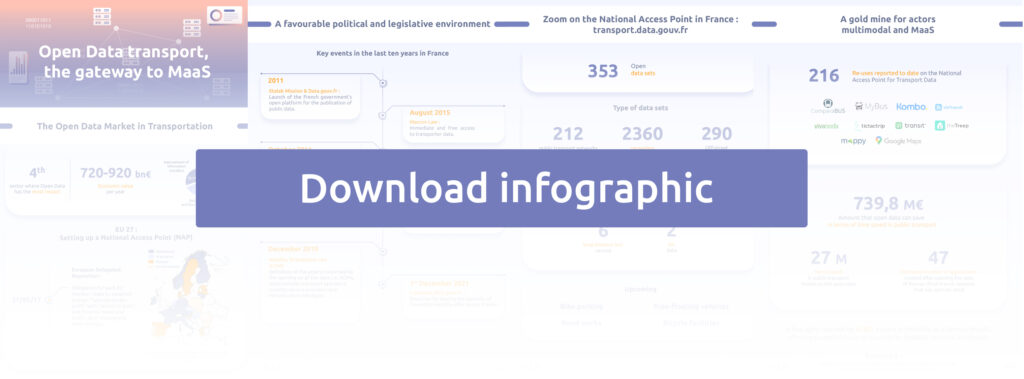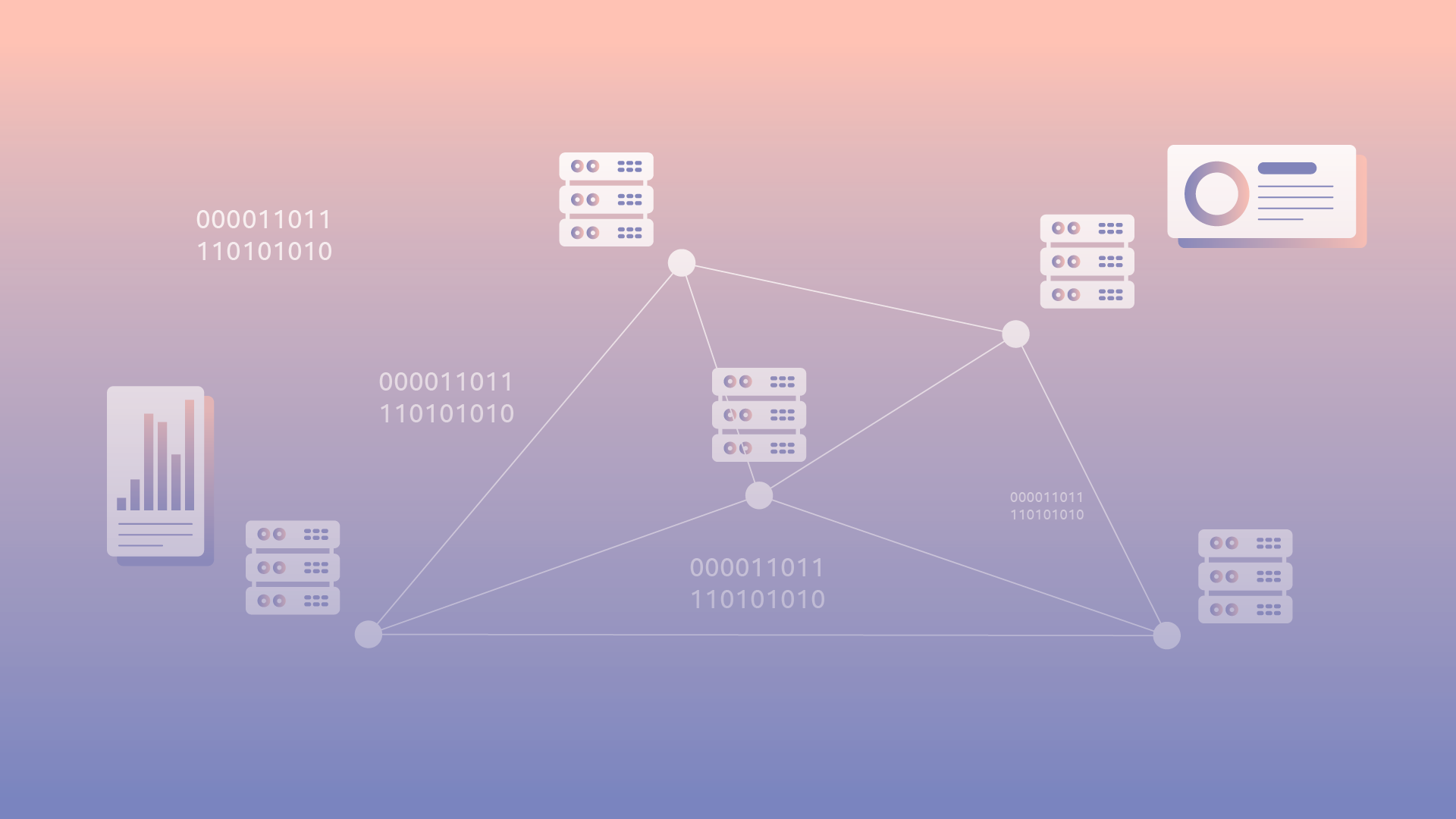“Without data, you can’t create information. And without information, there is no new knowledge possible.” This quote from the European Data Portal sums up the Open Data challenge very well. Open Data means free access to many data sets, and is being used in many sectors. In particular in public administration, science, meteorology,… and more and more in transport. Fourth sector where Open Data is the most impacting, data is now used to improve traveller information and experience. As experts in mobility and MaaS (Mobility as a Service), we found it interesting to study the evolution of Open Data in the transport sector. This is done through our infography “Open Data transport : the gateway to Mbility as a Service (MaaS)”.
Open data transport, in perpetual evolution
Far from being a recent subject, the opening of data dates back to 1978, with the so-called CADA law. A law that takes its name from the Commission for Access to Administrative Documents. The latter finally gave citizens access to public information. Following this, several legislative texts arrived such as the so-called PSI (Public Sector Information) Directive of 2003 providing the right to re-use public information… Or the Macron Law in 2015, defining immediate and free access to carrier data.

2016 : Lemaire Law, for a Digital Republic
But a real revolution in the transport sector will take place from October 2016. Indeed, the other laws mainly concerned Open Data in general. And this change was made with the Law for a Digital Republic, also known as the Lemaire Law. The latter set out “the obligation for public organisations and some private actors (holders of public contracts, beneficiaries of subsidies) to make their databases of general interest available free of charge on the Internet”.
2017 : The European Delegated Regulation
In order to maximise interoperability, a new piece of legislation at European level has been introduced. Namely, the European Delegated Regulation in May 2017. A directive obliging each member state of the European Union to establish a single national access point (NAP) with access to statistical and dynamic data on travel and traffic”. Two months later, France launched its own portal transport.data.gouv.fr.

A platform referencing the data of the entire mobility offer throughout France. At the time of its launch, only the Mobility Organising Authorities (AOM) were present. However, since the adoption of the french Mobility Orientation Law, private public transport operators, mobility service providers and infrastructure managers are also concerned.
2019 : The Mobility Orientation Law (LOM)
Today the national access point transport.data.gouv.fr has no less than 353 open data sets. These include data on public transport, car-sharing areas, electric recharging stations, self-service bicycle services and many others. Data that will help improve passenger information. Above all, it will make it easier to deploy intermodal trip planning applications and even MaaS platforms.
Indeed, following the adoption of the LOM law, the AOMs are in charge of deploying a solution that will enable users to access real-time public transport information in a few years’ time. But not only that, they will also be able to buy their bus tickets, reserve a taxi, a parking space, or even a self-service bicycle or scooter.
To find the complete list of mobility data available on transport.data.gouv.fr, download our infography below.




